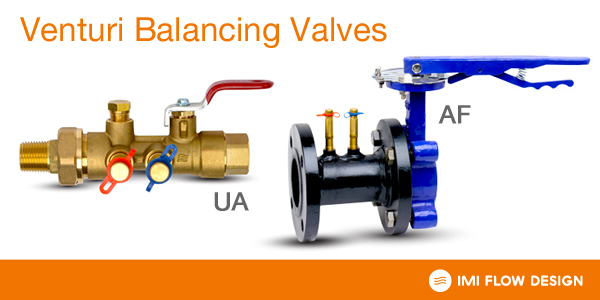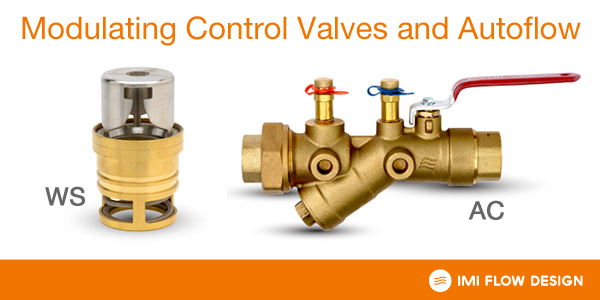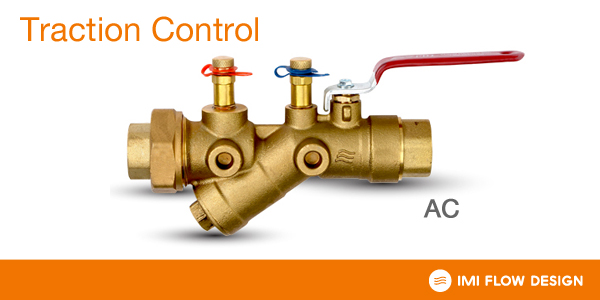Hydronic Engineering Defined
August 13th, 2020 | by flowdesign | No comments yetOptimal performance! The common goal of engineers, controls contractors, building owners and operators when designing, installing and commissioning HVAC systems. And that means two things: Consistent comfort for tenants and users at every building location Energy efficiency for reduced consumption and costs Hydronic engineering is the foundation for optimal HVAC system performance. Here’s
What Pressure Range Should I Choose?
June 26th, 2020 | by Mike | No comments yetWhat Does It Mean? 2-32 psi means that as long as the difference in pressure between the two ports on the valve is greater than 2 psi and less than 32 psi, the flow will be within 5% of the rated flow. It’s important to note that it’s the difference that matters: if the red
Dual Seal End Pieces
October 15th, 2015 | by Mike | No comments yetMotivation For years, IMI-Flow Design has provided valves with end connections customized for the job at hand. When field disconnection is desired this means our carefully designed o-ring unions with their superior o-ring retention, but on system connections for an isolation valve a more permanent and tamper-proof system is required. The dual seal end-piece design is a permanent
Why’s There A Nut Under That Handle?
October 15th, 2015 | by Mike | No comments yetWhat? Many products from IMI-Flow Design have an integrated ball valve for isolating the terminal. Under the handle of these ball valves there’s a nut. This is called the “packing nut”. Concealed under the packing nut is… wait for it… packing. Specifically, there’s a piece of PTFE which is squeezed by the nut to
Three Classes of Flow Controller
May 11th, 2015 | by Mike | No comments yetClass I These are the simplest flow controllers mechanically. The differential pressure across the device acts on an area, which tends to move a piston. This force is opposed by a force which varies with position (normally a spring). The force due to pressure and the spring force determine the position of the piston. The
Venturi Balancing Valves
December 31st, 2014 | by Mike | No comments yet
IMI Flow Design sells manual balancing valves based on a fixed venturi element. This brings up certain questions, of course. What’s a Venturi? A venturi, at least in this context, is a device which converts pressure to kinetic energy, then converts it back. To put it simply, it gets narrow, then widens out gradually so
Modulating Control Valves and Autoflow™
December 31st, 2014 | by Mike | No comments yet
The question comes up regularly: does Autoflow™ interfere with the operation of a modulating control valve? After all, as the control valve closes, the Autoflow will be opening. In short, of course it will make a difference, but it will not be worse than without the Autoflow™. Saturation The rate of heat flux from the
Traction Control
December 31st, 2014 | by Mike | No comments yet
Picture yourself on a soggy dirt road. For some reason you’ve stopped and want to get going again. Unfortunately, when you press the gas, one wheel spins. Pressing the gas more just makes it spin more and the car goes nowhere. Then you suddenly remember your car has traction control and activate it. The system

